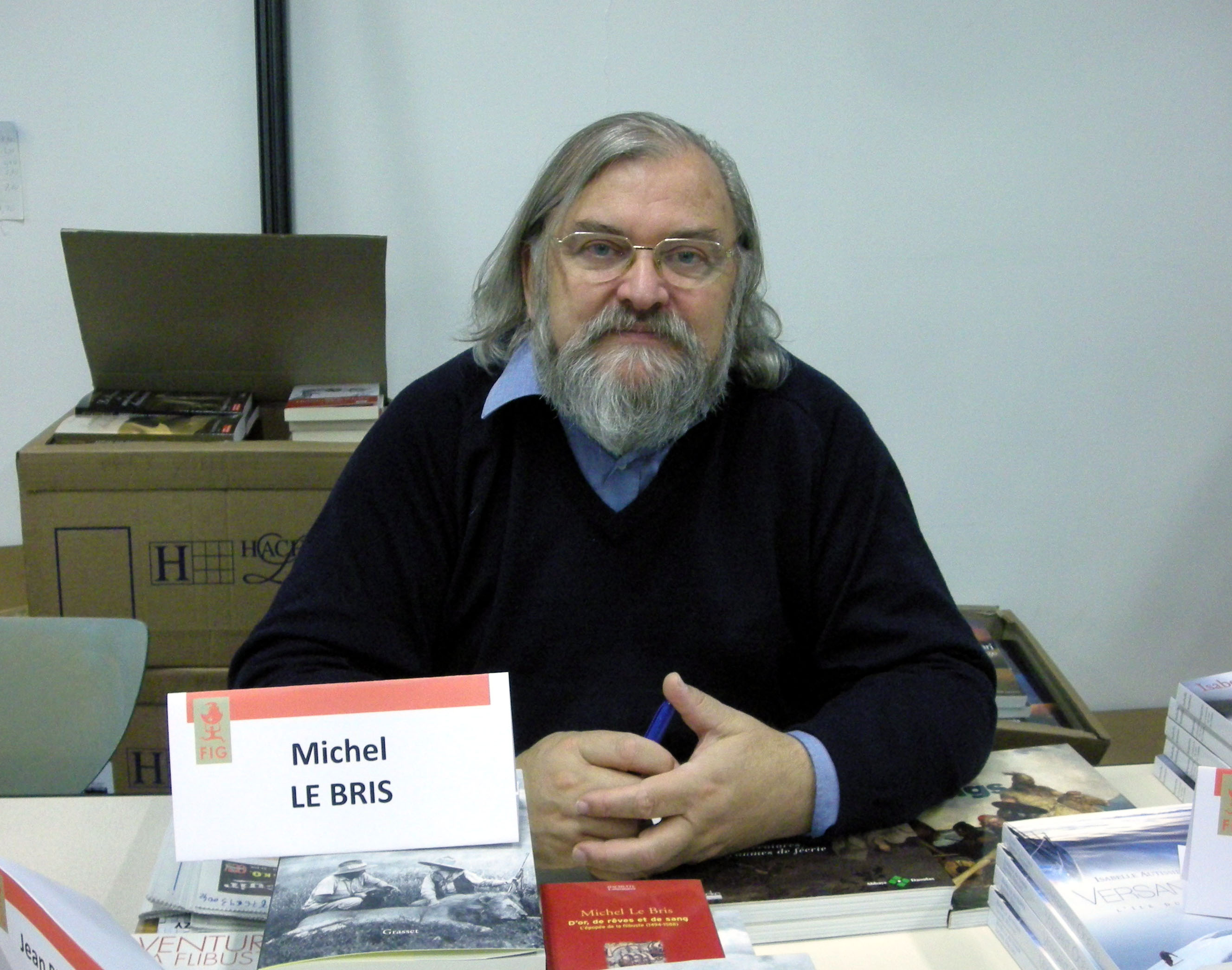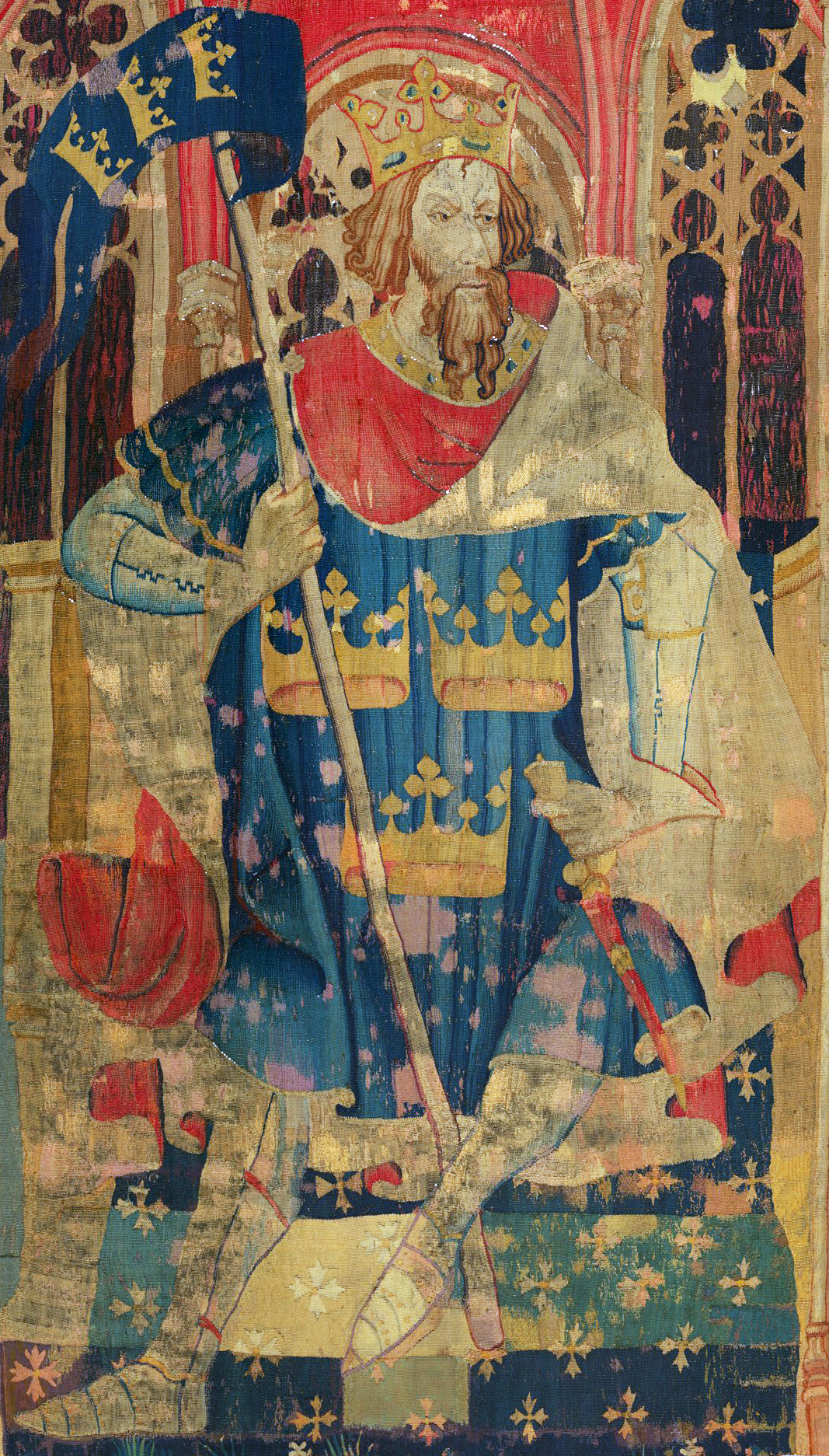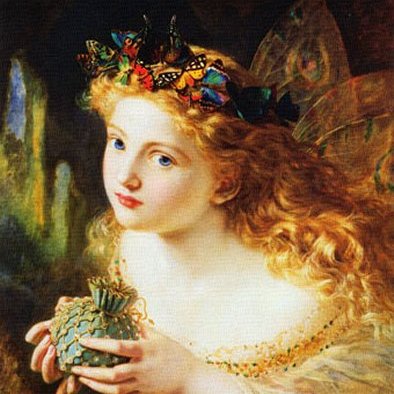|
Morvarc'h
Morvarc'h (Breton language, Breton for "Water horse, sea horse") is the name of a fabulous horse of Breton mythology, Breton legend found in two folktales reworked in the 19th and 20th centuries. Though its name appears in older sources, it was invented or reinterpreted by Géo-Charles, Charles Guyot, who named it Morvark in his version of the legend of the city of Ys in 1926. It belongs to the "Queen of the North" Malgven, who gives it to her husband King Gradlon. Endowed with the ability to gallop on the waves, Morvarc'h is described as having a black coat and as breathing flames through its nostrils. It also appears in a Breton folktale about Mark of Cornwall, King Marc'h of Cornouaille. In the course of a deer hunt it is killed by its own rider's arrow, which has been turned around by the spell of Dahut, Dahud, the daughter of Malgven. She then puts the ears of the horse Morvarc'h on the head of King Marc'h, who seeks in vain to hide them. The legend of Morvarc'h being fro ... [...More Info...] [...Related Items...] OR: [Wikipedia] [Google] [Baidu] |
Malgven
Malgven, or Malgwen(n), is a character introduced into the legend of the city of Ys, a mythical city on the coast of Brittany, at the end of the 19th century by Édouard Schuré, and is possibly based on a local legend from the Cap Sizun. She was made known by Charles Guyot (Géo-Charles) at the beginning of the 20th century, in his literary adaptation of the legend of Ys. As a valkyrie and queen of the "North", Malgven reigns over the land with her ageing husband, King Harold. She meets King Gradlon while he is raiding and falls in love with him. She persuades him to kill her husband and to flee with her on her horse Morvarc'h, towards Gradlon's lands in Brittany. The journey lasts a year, during which time she gives birth to a daughter, Dahut. Malgven dies in childbirth. Although she may not be an authentic part of the legend of the city of Ys, Malgven provides a magical origin story for her daughter Dahut and contributes to the dramatic and romantic aspect of the le ... [...More Info...] [...Related Items...] OR: [Wikipedia] [Google] [Baidu] |
Water Horse
A water horse (or "waterhorse" in some folklore) is a mythical creature that appears in multiple forms in Celtic and Scandinavian folklore, such as the , , the , each-uisge, and kelpie. Name origin The term "water horse" was originally a name given to the kelpie, a creature similar to the hippocamp, which has the head, neck and mane of a normal horse, front legs like a horse, webbed feet, and a long, two-lobed, whale-like tail. The term has also been used as a nickname for lake monsters, particularly Ogopogo and Nessie. The name "kelpie" has often been a nickname for many other Scottish lake monsters, such as each uisge and Morag of Loch Morar and Lizzie of Loch Lochy. Other names for these sea monsters include "seahorse" (not referring to the seahorse fish) and "hippocampus" (which is the genus name for seahorses). The usage of "water horse" or "kelpie" can often be a source of confusion; some consider the two terms to be synonymous, while others distinguish the water ... [...More Info...] [...Related Items...] OR: [Wikipedia] [Google] [Baidu] |
Breton Mythology
Breton mythology is the mythology or corpus of explanatory and heroic tales originating in Brittany. The Bretons are the descendants of insular Britons who settled in Brittany from at least the third century. While the Britons were already Christianised in this era, the migrant population maintained an ancient Celtic mythos, similar to those of Wales and Cornwall. Breton mythology has many gods and mythical creatures specifically associated with nature cults. In this tradition of gods and creatures rooted in nature, there exist traces of certain Breton Catholic saints. * Ankou * Bugul Noz * Fions * Iannic-ann-ôd * Jetins * Korrigan * Cannard Noz * March Malaen * Morgens * Morvan, legendary chief of the Viscounty of Léon * Morvarc'h * Tadig Kozh (Placide Guillermic) * Tréo-Fall * Ys See also * Cornish mythology * Matter of Britain * Mythology in France * Welsh folklore * Welsh mythology Welsh mythology (also commonly known as ''Y Chwedlau'', meaning "T ... [...More Info...] [...Related Items...] OR: [Wikipedia] [Google] [Baidu] |
Gradlon
Gradlon the Great (''Gradlon Meur'') was a semi-legendary 5th century "king" of Cornouaille who became the hero of many Breton folk stories. The most famous of these legends is the story of the sunken city of Ys. He is supposed to have been the son of Conan Meriadoc, but Conan lived much earlier in the late 4th Century. Legend of Ys King Gradlon (Gralon in Breton) ruled in Ys, a city built on land reclaimed from the sea, sometimes described as rich in commerce and the arts. He lived in a wealth palace of marble, cedar and gold. In some versions, Gradlon built the city upon the request of his daughter Dahut, who loved the sea. To protect Ys from inundation, a dike was built with a gate that was opened for ships during low tide. The one key that opened the gate was held by the king. Some versions, especially early ones, blame Gradlon's sins for the destruction of the city. However, most tellings present Gradlon as a pious man, and his daughter Dahut as a sorceress or a wayw ... [...More Info...] [...Related Items...] OR: [Wikipedia] [Google] [Baidu] |
Mark Of Cornwall
Mark of Cornwall (, , , ) was a sixth-century King of History of Cornwall, Kernow (Cornwall), possibly identical with King Conomor. As Mark or Marc (''Marc'h''), he is best known for his appearance in King Arthur, Arthurian legend as the uncle of Tristan and the husband of Iseult, who engages with Tristan in a secret liaison, giving Mark the epithet "Cuckold King". King Mark In Old Welsh records, Mark is recorded as "March son of Meirchion" of Kernow (Cornwall). He is associated with governing portions of Gwynedd and Glamorgan in Wales. The distance of these areas from modern day Cornwall may indicate that Mark was in fact a ruler of the eponymous Cornovii. Mark has been identified with Conomor, a king of Domnonea and Kernev (Domnonée and Cornouaille) in Armorica. In his ''Life of St. Paul Aurelian, Pol de Leon'', Wrmonoc of Landévennec refers to a "King Marc whose other name is Quonomorus". Also rendered as ''Cunomorus'', the name means "Hound-of-the-sea".Thomas, Charles ... [...More Info...] [...Related Items...] OR: [Wikipedia] [Google] [Baidu] |
Dahut
Dahut, also spelled Dahud, is a princess in Breton legend and literature, associated with the legend of the drowned city of Ys. Etymology From Old Breton ''da'', "good" (cf. Welsh ''da'', same meaning), and ''hud'', "magic" (cf. Welsh ''hud'', same meaning). Amy Varin suggests that Dahud was given the name Ahes due to confusion with "alc'hwez" (key). Legend of Ys Dating to the 15th century, the earliest mentions of Ys and its king, Gradlon, do not mention Gradlon's daughter Dahut, and the king himself is to blame for the destruction of the city. Dahut was first mentioned in the third edition of Albert Le Grand's ''Vie des Saincts de la Bretagne Armorique'' (1680). In this early version, the "shameless" Dahut intends to kill her father and steals the key which symbolizes his royalty. Her wickedness causes a storm which floods Ys, and she dies in the destruction. In most retellings, the city of Ys is protected from floods by a dike, with King Gradlon possessing the keys to ... [...More Info...] [...Related Items...] OR: [Wikipedia] [Google] [Baidu] |
Gradlon Et Corentin - Keris, Souvestre
Gradlon the Great (''Gradlon Meur'') was a semi-legendary 5th century "king" of Cornouaille who became the hero of many Breton folk stories. The most famous of these legends is the story of the sunken city of Ys. He is supposed to have been the son of Conan Meriadoc, but Conan lived much earlier in the late 4th Century. Legend of Ys King Gradlon (Gralon in Breton) ruled in Ys, a city built on land reclaimed from the sea, sometimes described as rich in commerce and the arts. He lived in a wealth palace of marble, cedar and gold. In some versions, Gradlon built the city upon the request of his daughter Dahut, who loved the sea. To protect Ys from inundation, a dike was built with a gate that was opened for ships during low tide. The one key that opened the gate was held by the king. Some versions, especially early ones, blame Gradlon's sins for the destruction of the city. However, most tellings present Gradlon as a pious man, and his daughter Dahut as a sorceress or a waywa ... [...More Info...] [...Related Items...] OR: [Wikipedia] [Google] [Baidu] |
André Le Ruyet
André Le Ruyet (2 December 1932 – 9 April 2021) was a French poet and writer of Breton origin. Biography The son of a Breton language storyteller, Le Ruyet wrote short stories, poems, and novels, imbued with Breton fantasy stories. In the working-class suburbs of Paris, he joined the Young Christian Workers. After a long career with Nouvelles Messageries de la Presse Parisienne, he returned to his fatherland of Brittany Brittany ( ) is a peninsula, historical country and cultural area in the north-west of modern France, covering the western part of what was known as Armorica in Roman Gaul. It became an Kingdom of Brittany, independent kingdom and then a Duch ... and started his work on short stories and novels. Le Ruyet received the Prix Corbière for his book ''Morvarc'h'', the Prix des Écrivains bretons for ''Itinéraire de Paris à Kernascléden'' and the Prix Bernard Moitessier for ''Spectralement vôtre''. His book ''Itinéraire de Paris à Kernascléden'' discus ... [...More Info...] [...Related Items...] OR: [Wikipedia] [Google] [Baidu] |
Breton Language
Breton (, , ; or in Morbihan) is a Southwestern Brittonic language of the Celtic languages, Celtic language group spoken in Brittany, part of modern-day France. It is the only Celtic language still widely in use on the European mainland, albeit as a member of the Insular Celtic languages, insular branch instead of the extinct Continental Celtic languages, continental grouping. Breton was brought from Great Britain to Armorica (the ancient name for the coastal region that includes the Brittany peninsula) by migrating Britons (Celtic people), Britons during the Early Middle Ages, making it an Insular Celtic language. Breton is most closely related to Cornish language, Cornish, another Southwestern Brittonic language. Welsh language, Welsh and the extinct Cumbric language, Cumbric, both Western Brittonic languages, are more distantly related, and the Goidelic languages (Irish language, Irish, Manx language, Manx, Scottish Gaelic) have a slight connection due to both of their origi ... [...More Info...] [...Related Items...] OR: [Wikipedia] [Google] [Baidu] |
King Arthur
According to legends, King Arthur (; ; ; ) was a king of Great Britain, Britain. He is a folk hero and a central figure in the medieval literary tradition known as the Matter of Britain. In Wales, Welsh sources, Arthur is portrayed as a leader of the Sub-Roman Britain, post-Roman Britons in battles against the Anglo-Saxons in the late-5th and early-6th centuries. He first appears in two early medieval historical sources, the ''Annales Cambriae'' and the ''Historia Brittonum'', but these date to 300 years after he is supposed to have lived, and most historians who study the period Historicity of King Arthur, do not consider him a historical figure.Tom Shippey, "So Much Smoke", ''review'' of , ''London Review of Books'', 40:24:23 (20 December 2018) His name also occurs in early Welsh-language literature, Welsh poetic sources, such as ''Y Gododdin''. The character developed through Welsh mythology, appearing either as a great warrior defending Britain from human and supernatura ... [...More Info...] [...Related Items...] OR: [Wikipedia] [Google] [Baidu] |
Breton Lai
A Breton lai, also known as a narrative lay or simply a lay, is a form of medieval French and English romance literature. Lais are short (typically 600–1000 lines), rhymed tales of love and chivalry, often involving supernatural and fairy-world Celtic motifs. The word "lay" or "lai" is thought to be derived from the Old High German and/or Old Middle German ''leich'', which means play, melody, or song, or as suggested by Jack Zipes in ''The Oxford Companion to Fairy Tales'', the Irish word ''laid'' (song).Zipes, 62 Zipes writes that Arthurian legends may have been brought from Wales, Cornwall and Ireland to Brittany; on the continent the songs were performed in various places by harpists, minstrels, storytellers.Zipes, Jack, ''The Oxford Companion to Fairytales''. Oxford UP. 2009 62-63 Zipes reports the earliest recorded lay is Robert Biker's Lai du Cor, dating to the mid- to late-12th century. The earliest of the Breton lais to survive are probably '' The Lais of Marie de ... [...More Info...] [...Related Items...] OR: [Wikipedia] [Google] [Baidu] |
Marie De France
Marie de France (floruit, fl. 1160–1215) was a poet, likely born in France, who lived in England during the late 12th century. She lived and wrote at an unknown court, but she and her work were almost certainly known at the royal court of King Henry II of England. Virtually nothing is known of her life; both her given name and its geographical specification come from manuscripts containing her works. However, one written description of her work and popularity from her own era still exists. She is considered by scholars to be the first woman known to write francophone verse. Marie de France wrote in Old French, possibly the Anglo-Norman language, Anglo-Norman variety. She was proficient in Latin, as were most authors and scholars of that era, as well as Middle English and possibly Breton language, Breton. She is the author of the ''Lais of Marie de France''. She translated Aesop's Fables from Middle English into Anglo-Norman French and wrote ''Espurgatoire seint Partiz'', ''Leg ... [...More Info...] [...Related Items...] OR: [Wikipedia] [Google] [Baidu] |







